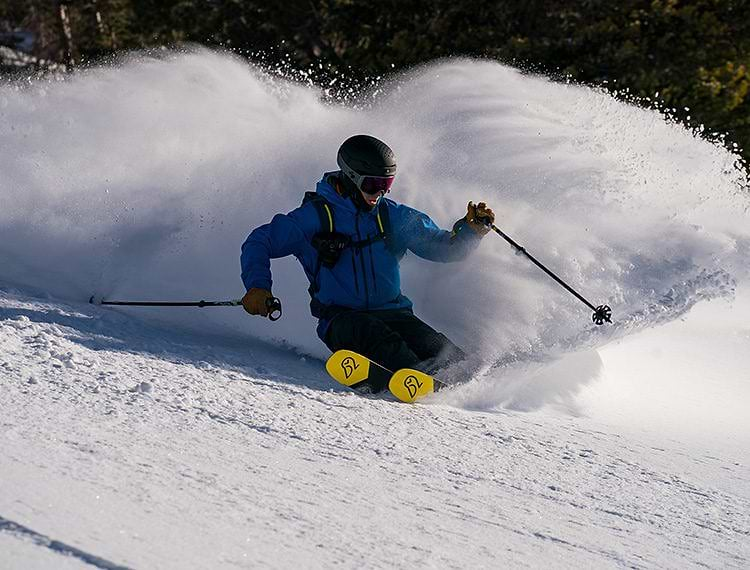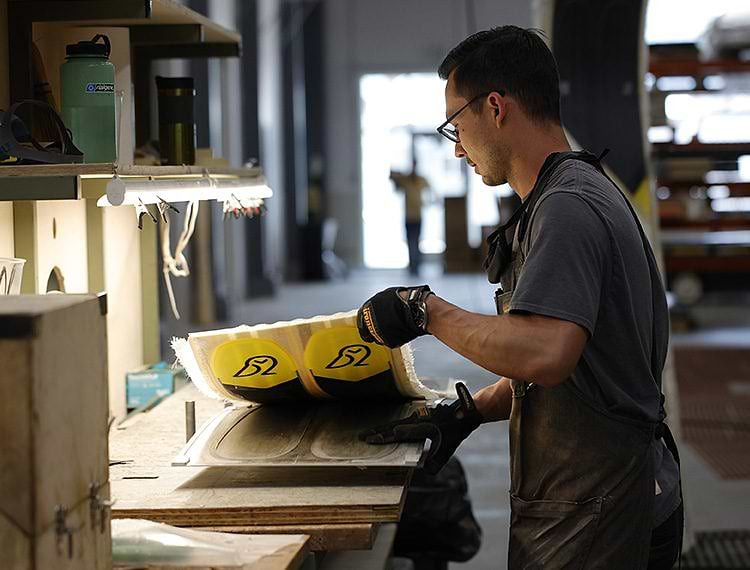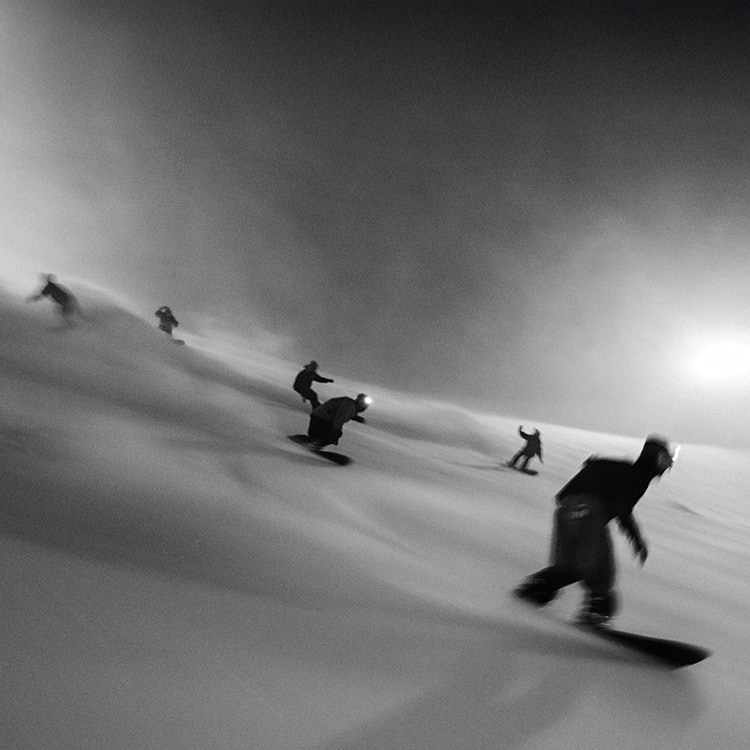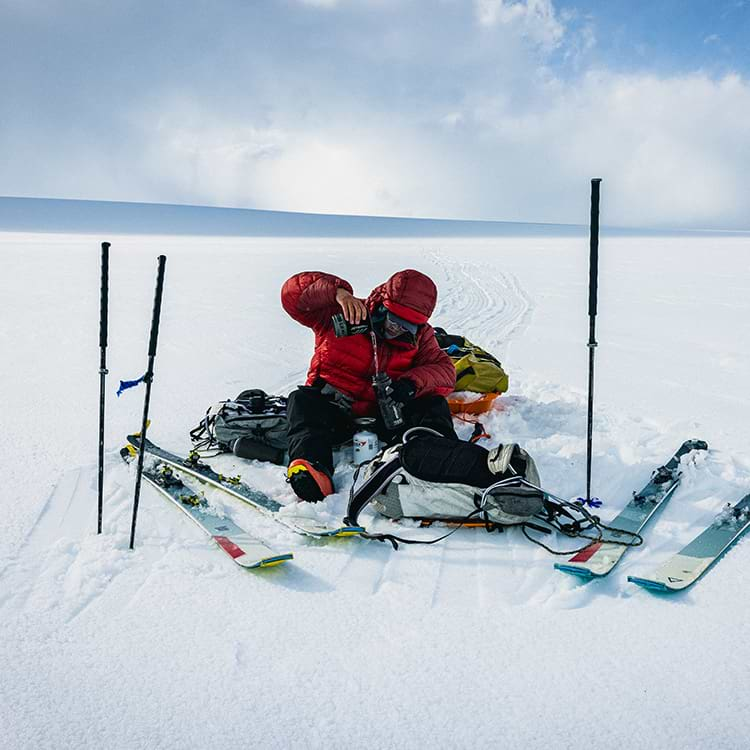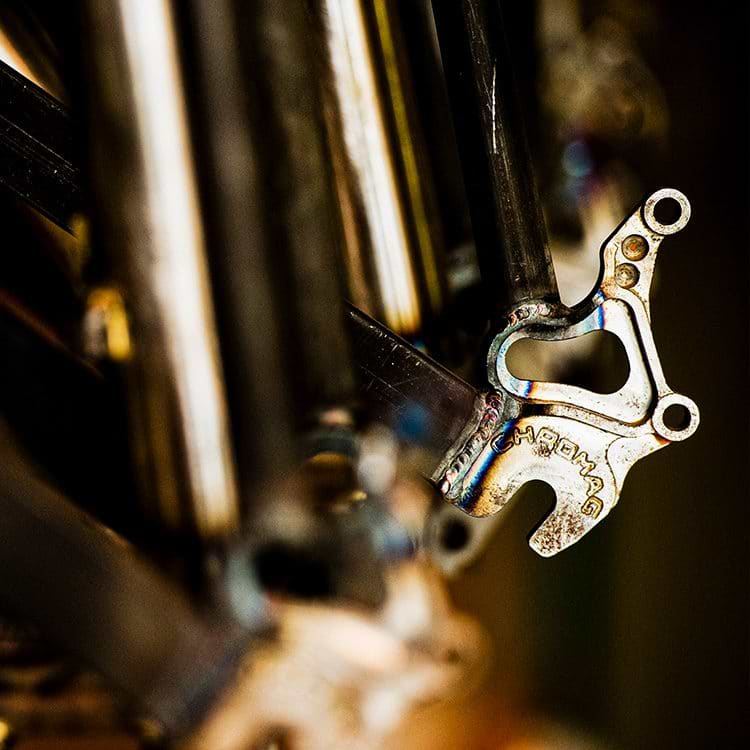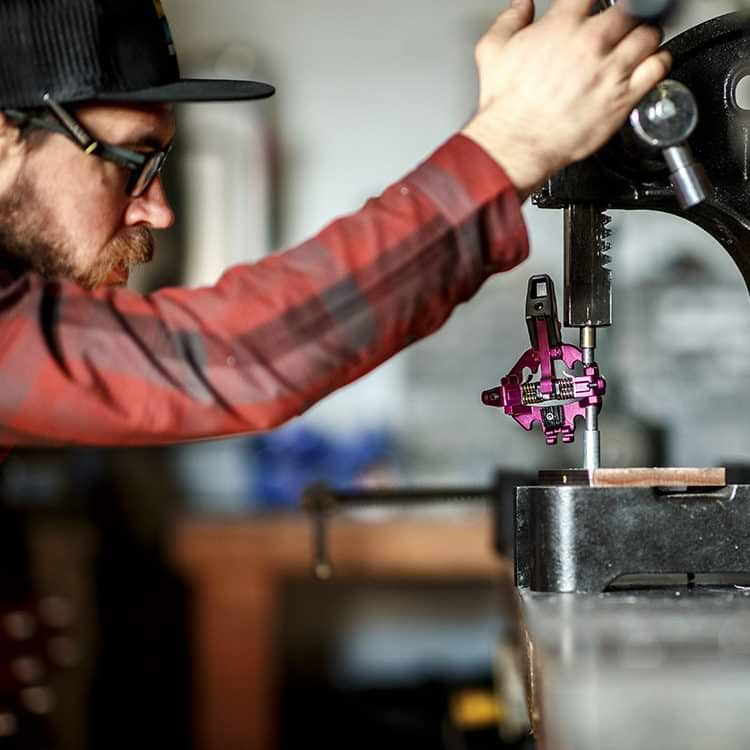If two biochemists tried to sell the world on skis and snowboards made from algae, they might never make it past the elevator pitch. But when ski industry legends like former pro skier Matt Sterbenz, founder of 4FRNT Skis, and Pep Fujas, talk about a technology that makes the dirty process of ski manufacturing more sustainable, people listen.
In fact, so many people have listened, that WNDR (pronounced “Wonder”) Alpine received major awards from ISPO and Fast Company, in addition to earning the first B Corp certification by a ski brand ever (Burton was previously the only other hardgoods brand in the snowsports space to earn the certification). And that all happened before the company’s third birthday.
WNDR Alpine has effectively replaced some of the petroleum-based composites used in ski production with a plastic derived from microalgae oil. According to WNDR and its many fans, this algal oil (that’s mixed with other chemicals to make a biobased polyurethane) increases downhill performance without adding weight. It’s said to improve the skis’ strength-to-weight ratio, torsional rigidity, and damping characteristics.
Basically, WNDR Alpine is leveraging biotechnology to create new bio-based materials, from renewable sources, to outperform its current petroleum-based counterparts.
“We want to eliminate high-carbon emitting materials and align our moral, environmental and humanitarian interests to make sure we aren’t excessively polluting as a consequence of making skis”
WNDR’s parent company, Checkerspot (a high-performance materials company based in California’s Bay area) developed the technology, and when Checkerspot CEO Charlie Dimmler needed an application for microalgae, he thought back to a ski trip to Austria, where he saw first-hand that ski construction techniques were outdated and stagnant. He decided skis would be the perfect vessel for the technology. Dimmler reached out to Sterbenz after he sold 4FRNT and in 2018 appointed him GM of Wintersports. Sterbenz was expected to deliver on the materials science and fabrication of the first application of the plant-based plastic. So, he called friend and fellow Salt Lake City, Utah resident Pep Fujas to ask if he wanted to jump on board to run marketing and product development, as well as the WNDR ski team.
“I’ve always had a love for the outdoors and the natural world and cared about protecting those places we love and use for our mental and physical well-being,” says Fujas. “I saw this opportunity as a way to put all those pieces together into something that can be a vehicle for the greater good and to reduce our impact on the world.”
Checkerspot currently commercializes four materials: a light-weight polyurethane-based composite (Algal Core), a cast polyurethane (Algal Wall), a recycled composite of ski and snowboard production waste (Spiral Plate), and a textile coating formulated for clothing brands worldwide (sold in partnership with Beyond Surface Technologies as miDori bioWICK).
This year, WNDR Alpine debuted their BelleTour splitboard and BelleAire solid snowboard, with plans to launch its first apparel collection with bio-based wicking capabilities.
“We want to prove a point that our materials can outperform the incumbent petroleum-based products”
In 2019, WNDR launched with a single ski—the Intention 110, which incorporated plant-based polyurethane stringers in the core.
“Initially, it was scary going from a company that had a huge variety of skis to one that had one ski,” says Fujas. “Thankfully they were made really well, and I connected with them right away. Fujas used the Intention 110 for touring, resort skiing, and skiing Alta with his young daughters.
The 2020/21 lineup added the Vital 100 and a domestically sourced aspen wood core to its two-ski line-up. The updated Algal Core derived from microalgae polyol was laminated left and right of a center aspen core, which improves the strength over the edge of the ski. It also allows the brand to trace the origin of its wood with paulownia out over the edge. Now, liquid-poured, Algal Wall sidewalls make up every ski and snowboard in WNDR’s line-up, including the newly released Intention 108.
The biobased content in WNDR’s sidewalls went from 58% to 68% since the initial debut of Algal Wall. Thereas the epoxy bond between the ABS sidewall and the wood might fail on a traditional ski, WNDR’s in-molding process eliminates that. During the chemical reaction in the manufacturing process, liquid polyurethane is drawn into the vessels of the wood, creating an unbreakable bond.
WNDR occupies a 37,000 square-foot space in Salt Lake City, Utah, which includes a bulk chemical formulation facility to support the adoption of other companies using Checkerspot materials, and is close enough to Snowbird that they can test skis and boards made that morning. Referred to as the Design Lab by the team, the facility includes everything the company needs for start-to-finish ski making, from raw materials to finishing and fulfillment, with everything from screen printing and materials science to textiles and fabrication along the way. The facility also includes street access to the Nest, WNDR Alpine’s flagship storefront that opened this fall (WNDR Alpine can also be found in a handful of REI locations and at EVO’s brick-and-mortar locations this season).
As Sterbenz says, people love the idea of farm-to-table food and natural textiles that are fair-trade certified, but that mentality hasn’t carried over to hardgoods. WNDR hopes their technology attracts others in the outdoor space to join them in a new standard of environmental responsibility, and in leading a global movement of for-profit companies dedicated to using the power of business to build a more inclusive and sustainable economy.
Start photo: Pep Fujas









